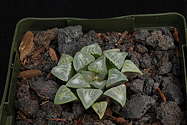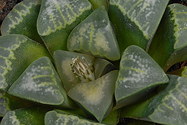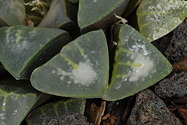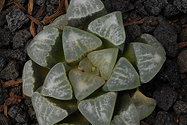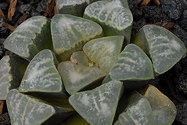Some haworthias have been the subjects of obsessive collecting and selection efforts, most notably H. truncata and the related H. maughanii. A few others, like H. mutica, have also suffered the depredations of overzealous collecting. One population that grew on a farm called Drew was nearly decimated as of 1970 by farming as well as poaching because of its much sought-after white-frosted leaves. A lone specimen from Drew survived at the Karoo Botanical Garden in Worcester, S. Africa when Bruce Bayer was curator there so was referred to as the “White Widow”. In exchange for repotting, Steven Hammer was allowed to extract two leaves that eventually rooted and produced a few plants that have been sparingly distributed. The original plant at Karoo BG got better and better with time, exhibiting the glacial pattern development exhibited in some haworthias.
Subsequently, other frosted forms of H. mutica were found in a population growing on a farm near Stormsvlei. Steven Hammer grew a few seeds from this locality and crossed the best frosted clone with “White Widow” to produce a number of seedlings. Five years later the best clone from this batch was used in a backcross with its lacto-tinged mother. An inflorescence from the best of the resultant seedlings was then initiated into tissue culture for this offering.
The cultivar name is inspired by Elsie the cartoon cow developed as a mascot for the Borden Dairy Company in 1936 to symbolize the “perfect dairy product”. The name ‘Mootica’ may not apply to the perfect, frosted haworthia but is fun to say especially if you choose the homonymous pronunciation of the epithet mutica rather than the alternate that sounds like “myootica”. It is interesting to note that markings on the new leaves of H. mutica ‘Mootica’ may at first show a slight golden tinge before turning milky white. Divisions of HBG 128481. $15.
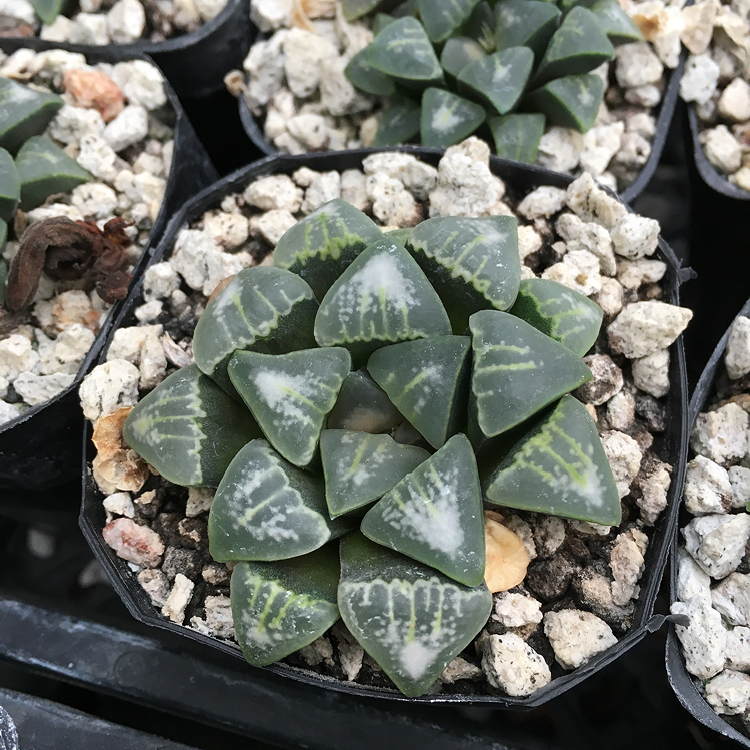
Published in the Cactus and Succulent Journal, Vol. 89 (3), May-June, 2017

